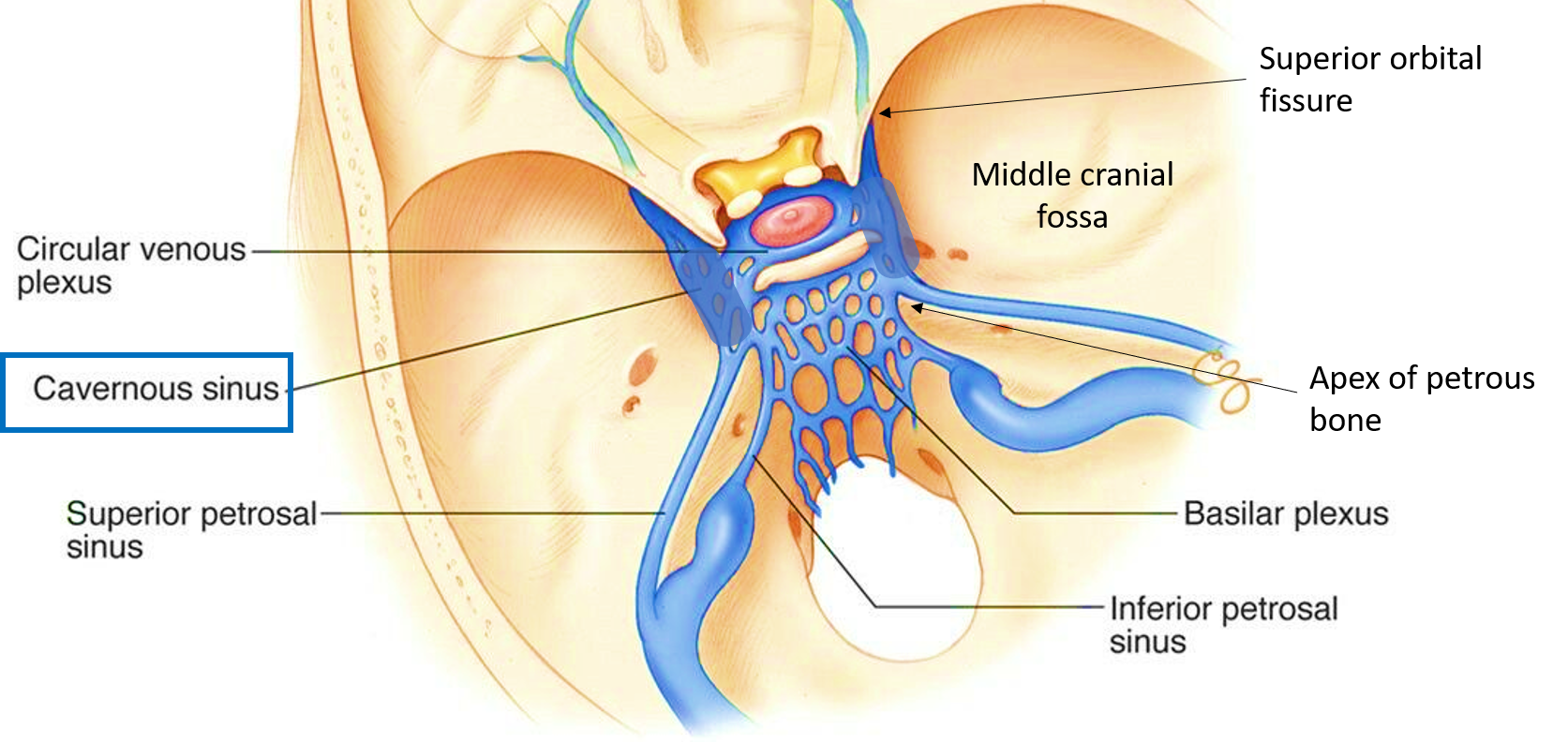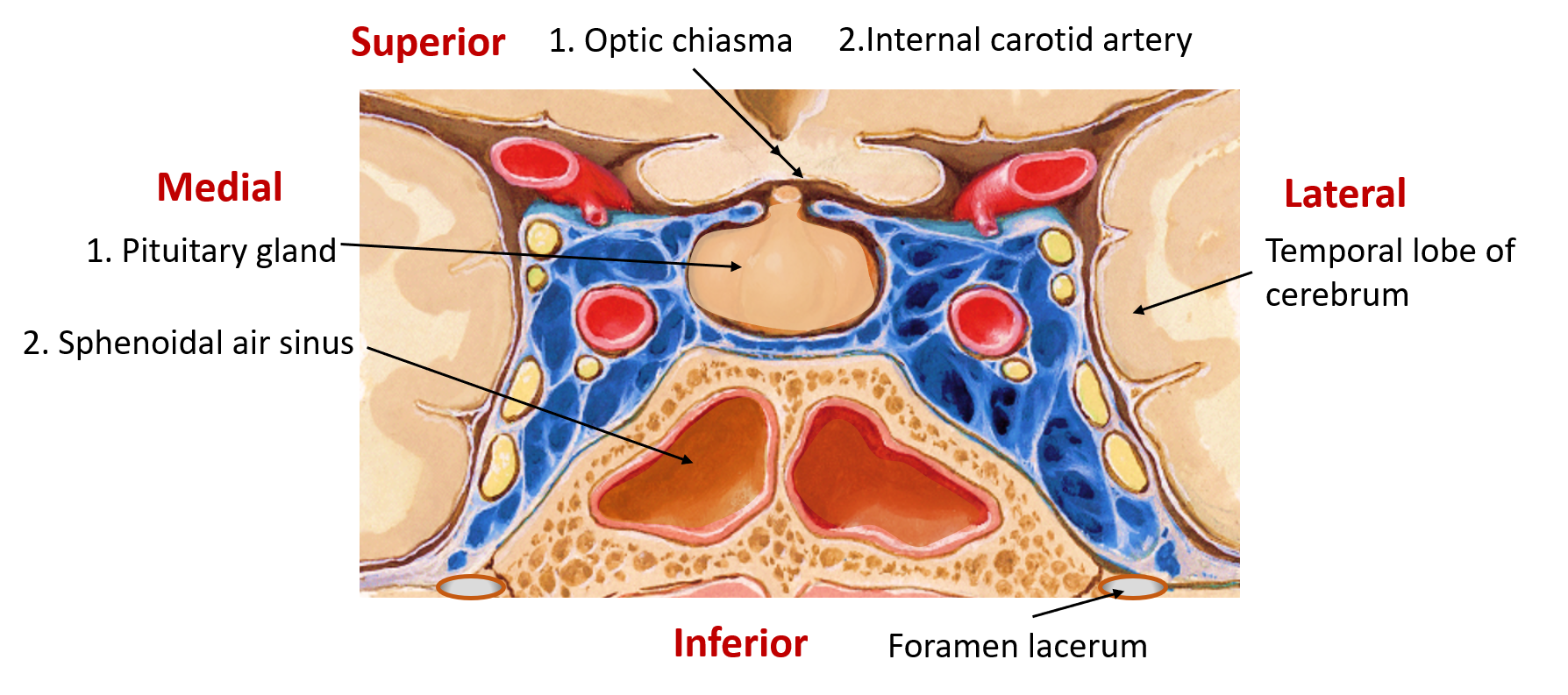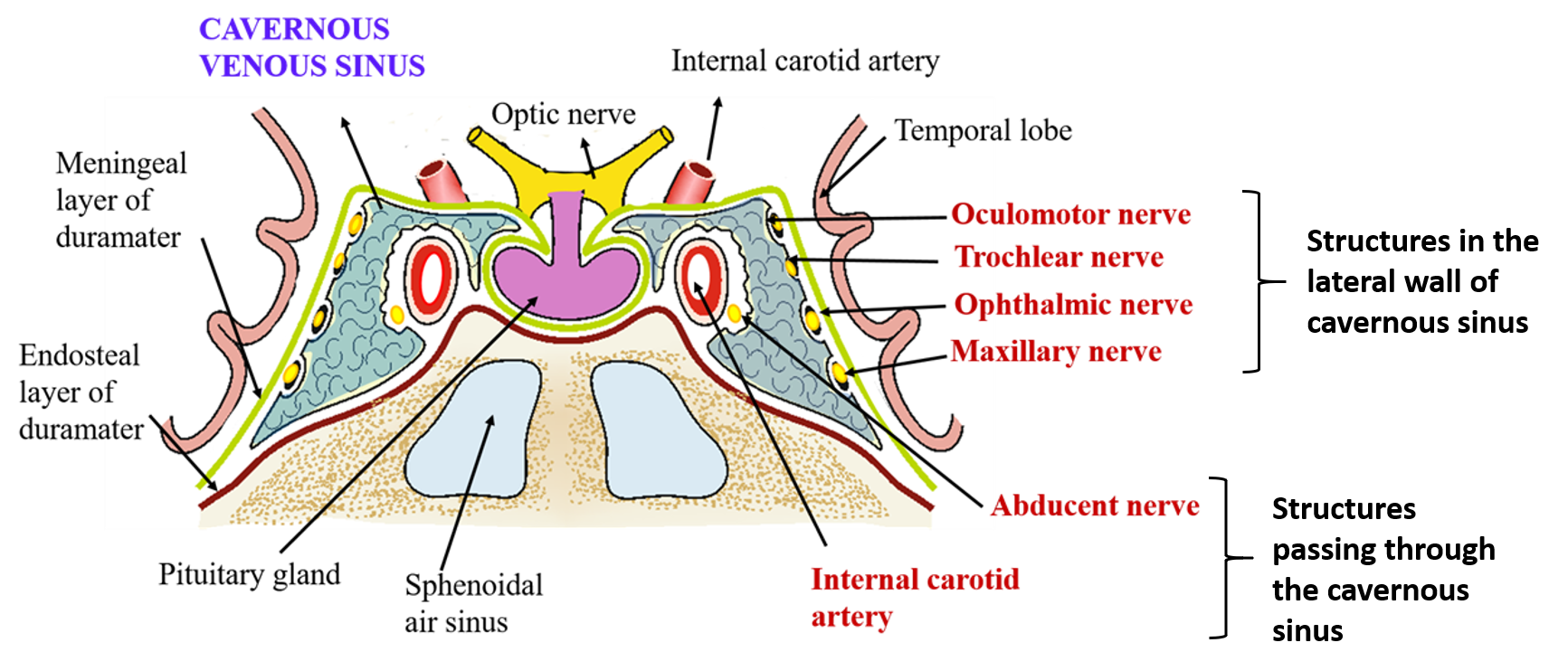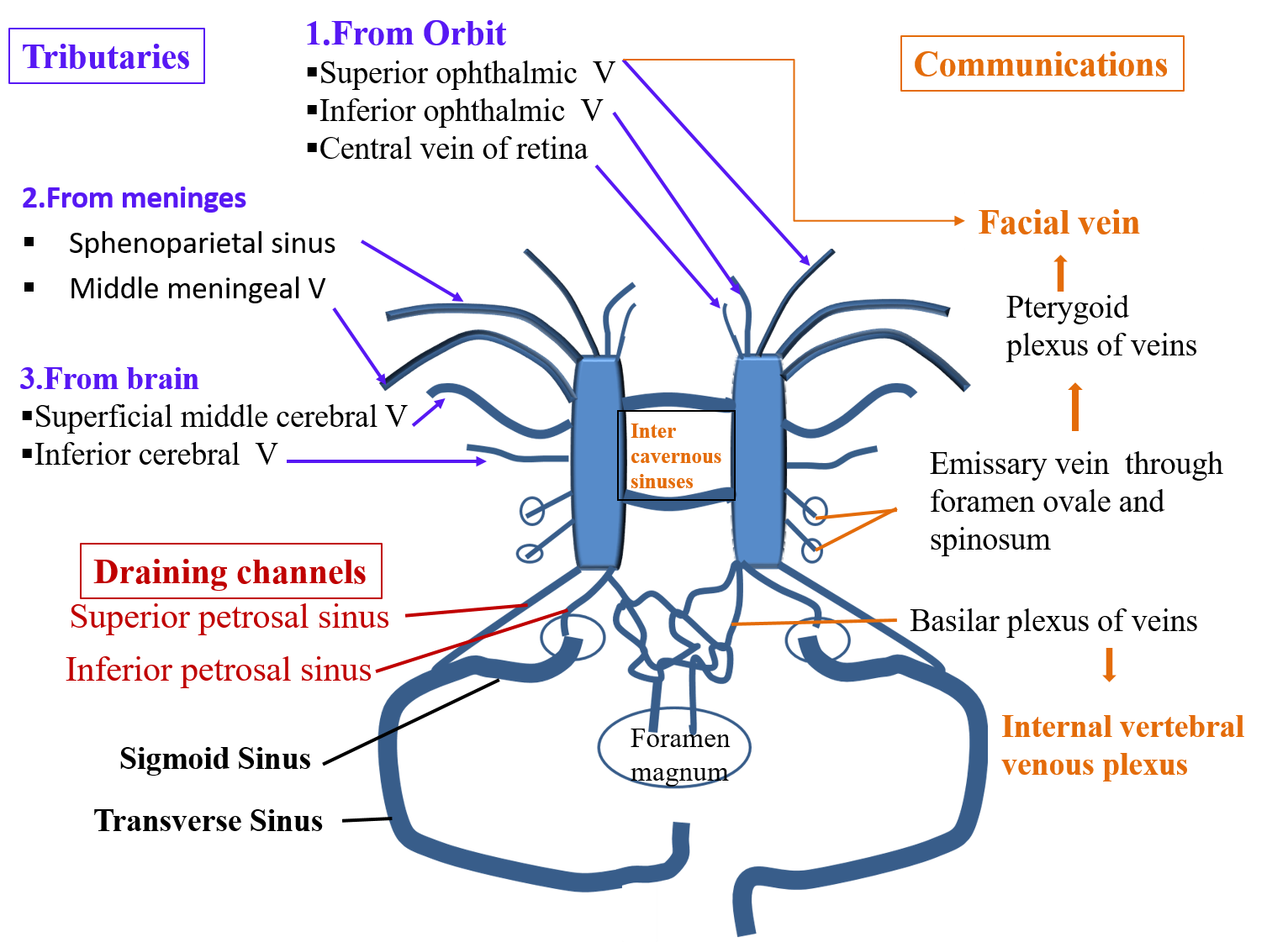Where are Cavernous Sinuses located?
- Cavernous venous sinuses are paired dural venous sinuses located in the middle cranial fossa on either side of the body of sphenoid bone.
- They extend from the medial end of superior orbital fissure (anteriorly) to the apex of petrous temporal bone (posteriorly).
- They are 2cm. long and 1cm. wide.
- They are present between the endosteal layer (forms the medial wall and floor) and meningeal layer (forms the roof and lateral wall) of dura mater.

What are the relations of Cavernous Sinus?
Following are the relations of cavernous Sinus
- Superiorly: optic chiasma, internal carotid artery.
- Inferiorly: foramen lacerum.
- Medially: pituitary gland, sphenoidal air sinus.
- Laterally: temporal lobe and uncus.
- Anteriorly: medial end of superior orbital fissure.
- Posteriorly: apex of petrous temporal bone.

Name the structures passing in the lateral wall and through the Cavernous Sinus
Four cranial nerves pass along the lateral wall of the Cavernous sinus. From above downwards they are:
- Oculomotor nerve (IIIrd CN)
- Trochlear nerve (IVth CN)
- Ophthalmic division of trigeminal nerve
- Maxillary division of trigeminal nerve
Structures passing through the cavernous sinus are:
- Internal carotid artery surrounded by sympathetic plexus.
- Abducent nerve (VIth CN)- is inferolateral to the artery.

* All the structures i.e. those in the lateral wall and those passing through the sinus are separated from the venous blood by endothelial lining.
Name the tributaries, draining channels and communications of Cavernous Sinus
The tributaries of cavernous sinus are :
- Superior ophthalmic vein
- Inferior ophthalmic vein from the orbit
- Central vein of retina
- Middle meningeal vein
- Sphenoparital sinus
- Superficial middle cerebral vein from the brain
- Inferior cerebral veins
- Hypophyseal veins
Draining channels: Venous blood from cavernous sinus drains into:
- Junction of transverse and sigmoid sinuses via superior petrosal sinus
- Internal jugular vein via inferior petrosal sinus
Communications: Cavernous sinus communicates with:
- Facial vein via superior ophthalmic vein.
- Pterygoid plexus of veins via emissary veins passing through foramen ovale, foramen spinosum and foramen lacerum..
- Opposite cavernous sinus via anterior and posterior intercavernous sinuses.
- Internal vertebral venous plexuses via basilar plexus of veins

Applied Aspects
Cavernous sinus thrombosis
The most common cause is spread of infection from the dangerous area of face (squeezing a pimple or boil). The signs and symptoms (due to involvement of structures closely related to cavernous sinus ) are:
- Severe pain in the eye & forehead due to involvement of opthalamic nerve.
- Papilledema (edema of optic disc): due to engorgement of central vein of retina.
- Exophthalmos : due to engorgement of ophthalmic veins.
- Dilated and fixed pupil: due to involvement of oculomotor nerve( parasympathetic fibers which supply sphincter pupillae).
- Ptosis (drooping of upper eyelid): due to involvement of oculomotor nerve (paralysis of levator palpabrae superioris).
- Ophthalmoplegia (paralysis of extraocular muscles): due to involment of IIIrd, IVth and VIth cranial nerves which supply extraocular muscles.
Pulsating exophthalmos occurs due to abnormal communication between cavernous sinus and internal carotid artery.
